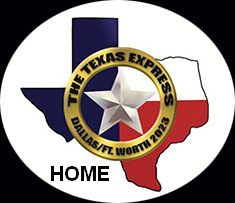Dean Smith has been a model railroader since his early teens, when he could be found literally lying on a basement floor under a four-by-eight foot sheet of plywood propped up on his friend’s shoulder, armed with nothing but a soldering iron and a flashlight. From these humble beginnings, Dean has spent nearly forty years modeling the East Tennessee & Western North Carolina—Vida Division Railroad, a twenty-three by twenty-nine foot HO/HOn3 operation-based layout, in his South-Central Missouri home. While based on the prototype ET&WNC and highlighting numerous prototype scenes, the Vida Division also has its whimsical side as Dean’s love for fantasy makes him incapable of taking anything too seriously. Over the past several years, Dean has presented clinics covering the operational aspects of his railroad, dual gauge operations, and scenery techniques, both at live conventions and virtually on NMRAx and on Off the Beaten Track. He became a Master Model Railroader in 2022.
CLINIC #1 of 2 - From Photo to Photo: Constructing a Fuel Depot for the Vida Division
Have you ever come across an old photograph of a prototype scene that “just begs to be modeled”? In this clinic, Dean takes such a photograph and breaks down how he recreates it on his HOn3 ET&WNC—Vida Division Railroad. In an 8-inch by 24-inch space, he covers everything from initial planning to final photography. Tips on forcing perspective, structure construction, and scenery techniques are all included as Dean progresses from bare plywood to completed scene. He also takes a look at creating effective photographs of the final result, going full circle from photograph to photograph.
CLINIC #2 of 2 - Bifocal Line in the Blue Ridge:
Dual Gauge Operation on the East Tennessee & Western North Carolina Railroad
This clinic explores dual gauge operation on the East Tennessee and Western North Carolina Railroad, both from the perspective of prototype operation and how to reproduce it on a model railroad. The ET&WNC is primarily remembered as a narrow gauge line, but its dual gauge operation between Johnson City and Elizabethton was an essential part of the railroad's livelihood for decades, bringing in materials from all over the country via the Southern and Clinchfield railroads. The ET&WNC was unique in using narrow gauge locomotives to move standard gauge cars, but we will also cover how other railroads, both prototype and model, "dual gauged," including discussions on transferring loads, switching cars, and specialized track work that may or may not be required. Not only are these vital connections between narrow and standard gauge railroads interesting from an historical perspective, they can also provide additional operating opportunities on model railroads.
|
|




